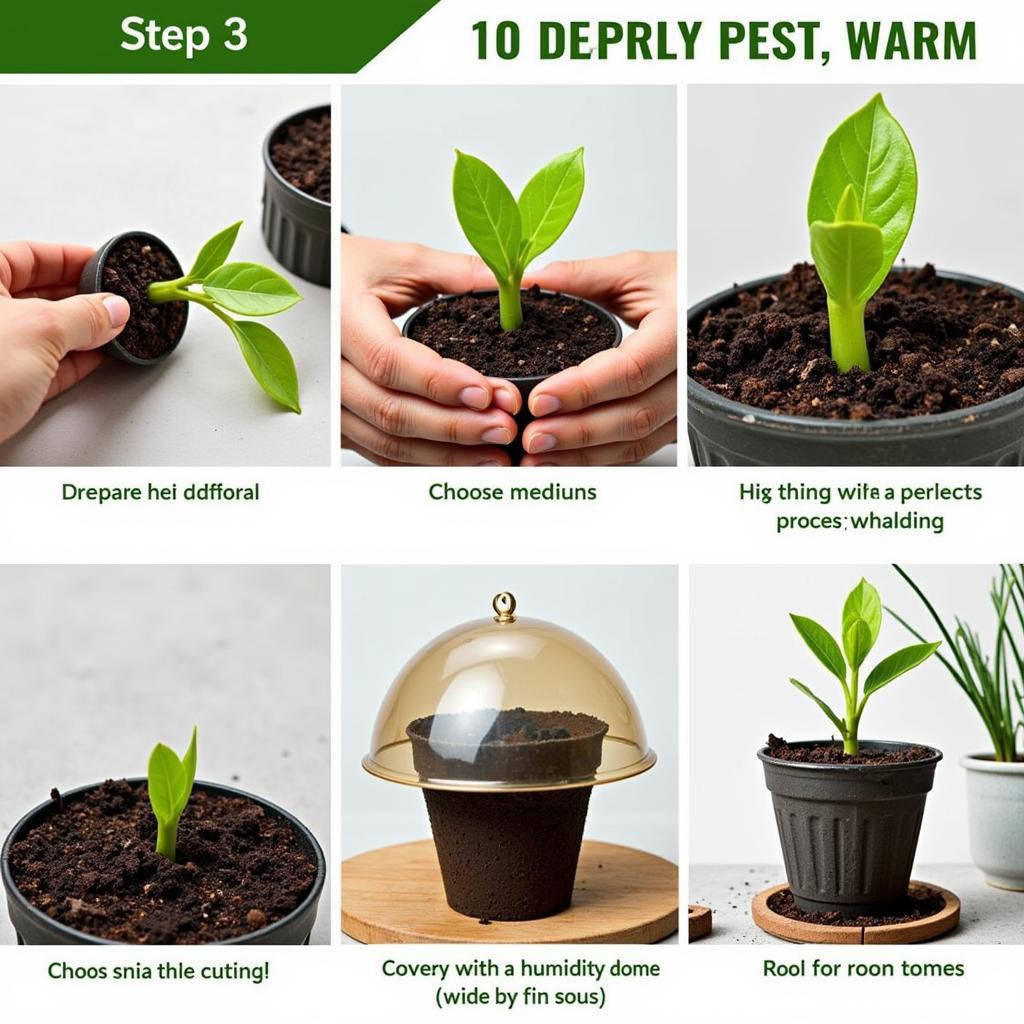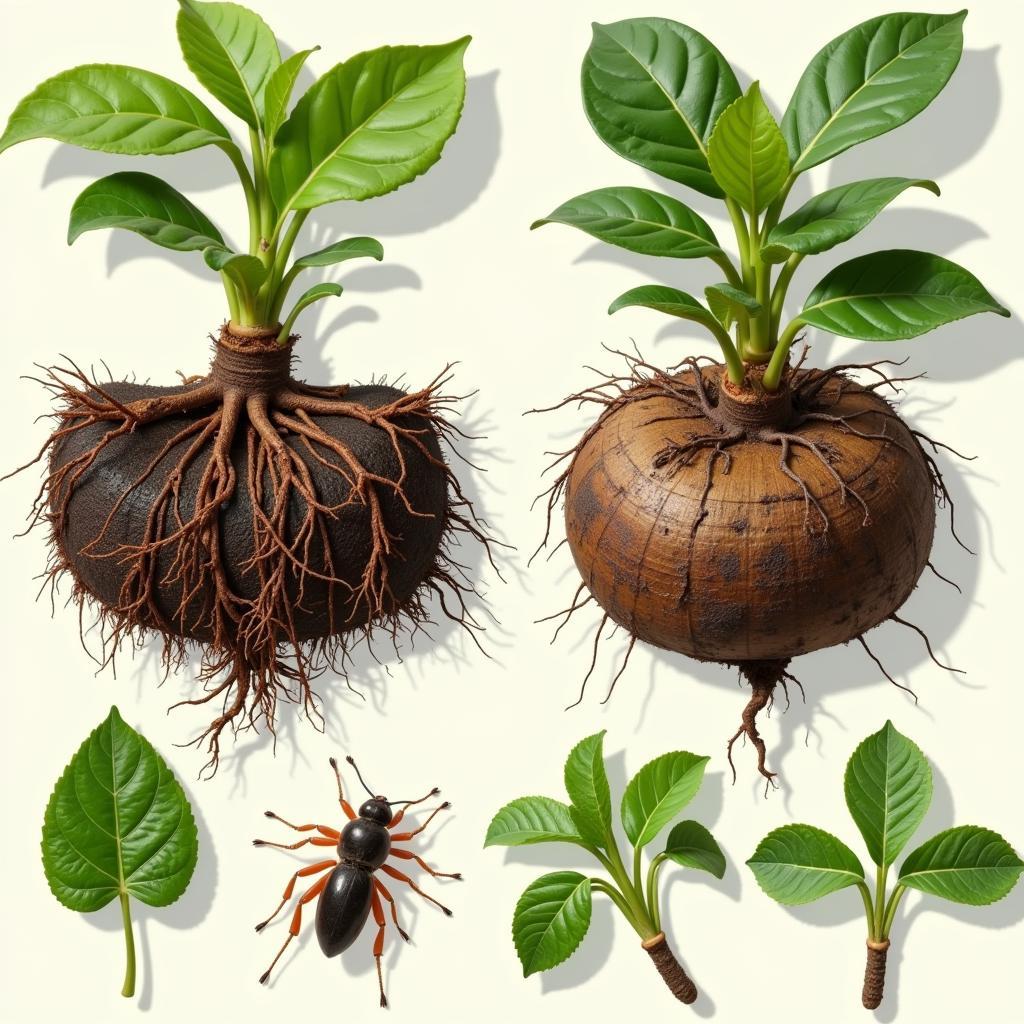Discovering the World of Rare Plant Cuttings
November 1, 2024Rare Plant Cuttings offer a unique and exciting way to expand your plant collection. Whether you’re a seasoned plant enthusiast or just starting your green journey, the allure of propagating a unique specimen from a cutting is undeniable. This article delves into the fascinating world of rare plant cuttings, covering everything from sourcing and propagation techniques to care tips and troubleshooting common issues.
Sourcing Your Rare Plant Cuttings
Finding rare plant cuttings can feel like a treasure hunt, adding to the excitement of growing these special plants. Online marketplaces, specialty nurseries, and plant swaps are great places to start. Building relationships with other plant collectors can also open doors to unique cuttings you might not find elsewhere. When purchasing online, be sure to research the seller and look for reviews to ensure you’re getting healthy, authentic cuttings. Remember to check import regulations if you’re buying from another country.
Propagating Rare Plant Cuttings: A Step-by-Step Guide
Propagating rare plant cuttings requires patience and attention to detail. While the specific method may vary depending on the plant species, the general principles remain the same.
- Prepare your cutting: Make a clean cut below a node using a sterilized blade. Remove any lower leaves to prevent rot.
- Choose your medium: A well-draining medium is crucial. A mix of perlite and sphagnum moss is a popular choice.
- Plant the cutting: Insert the cutting into the medium, ensuring the node is buried.
- Provide humidity and warmth: Cover the cutting with a humidity dome or plastic bag to create a humid environment. Place it in a warm, bright location, but avoid direct sunlight.
- Monitor and maintain: Keep the medium consistently moist but not waterlogged. Regularly check for signs of root development.
 A step-by-step guide to propagating rare plant cuttings
A step-by-step guide to propagating rare plant cuttings
Caring for Your Newly Rooted Rare Plants
Once your rare plant cuttings have rooted, they require specific care to thrive. Understanding the individual needs of your plant is essential. Research the specific light, water, and humidity requirements of your species. Gradually acclimate the plant to lower humidity levels before removing it from its propagation setup. Fertilizing can begin once the plant shows signs of active growth.
Troubleshooting Common Issues with Rare Plant Cuttings
Even with the best care, rare plant cuttings can encounter problems. Root rot is a common issue caused by overwatering or poorly draining medium. Pests and diseases can also affect cuttings. Early identification and treatment are crucial for successful propagation.
What are the best rare plant cuttings for beginners?
Some easy-to-propagate rare plant cuttings for beginners include Hoyas, Philodendrons, and Monsteras. These species are generally resilient and tolerant of a wider range of conditions.
How can I prevent root rot in my rare plant cuttings?
Using a well-draining medium and avoiding overwatering are key to preventing root rot. Allow the medium to dry out slightly between waterings.
 Troubleshooting common problems with rare plant cuttings like root rot and pests
Troubleshooting common problems with rare plant cuttings like root rot and pests
Conclusion
Growing rare plant cuttings is a rewarding experience. With patience and the right knowledge, you can expand your plant collection with unique and beautiful specimens. Remember that sourcing ethically and providing proper care are vital for the long-term health and success of your rare plant cuttings.
FAQ
- Where can I find rare plant cuttings?
- What is the best medium for propagating rare plant cuttings?
- How long does it take for rare plant cuttings to root?
- What are the signs of root rot in rare plant cuttings?
- How often should I water rare plant cuttings?
- When should I fertilize newly rooted rare plants?
- How do I acclimate my rooted cuttings to lower humidity?
For further information, check out our articles on specific rare plant species and propagation techniques. When you need help, please contact us: Phone: 0915117113, Email: [email protected] Or visit us at: Hamlet 3, Binh An neighborhood, Phu Thuong, Binh Phuoc 830000, Vietnam. We have a 24/7 customer service team.